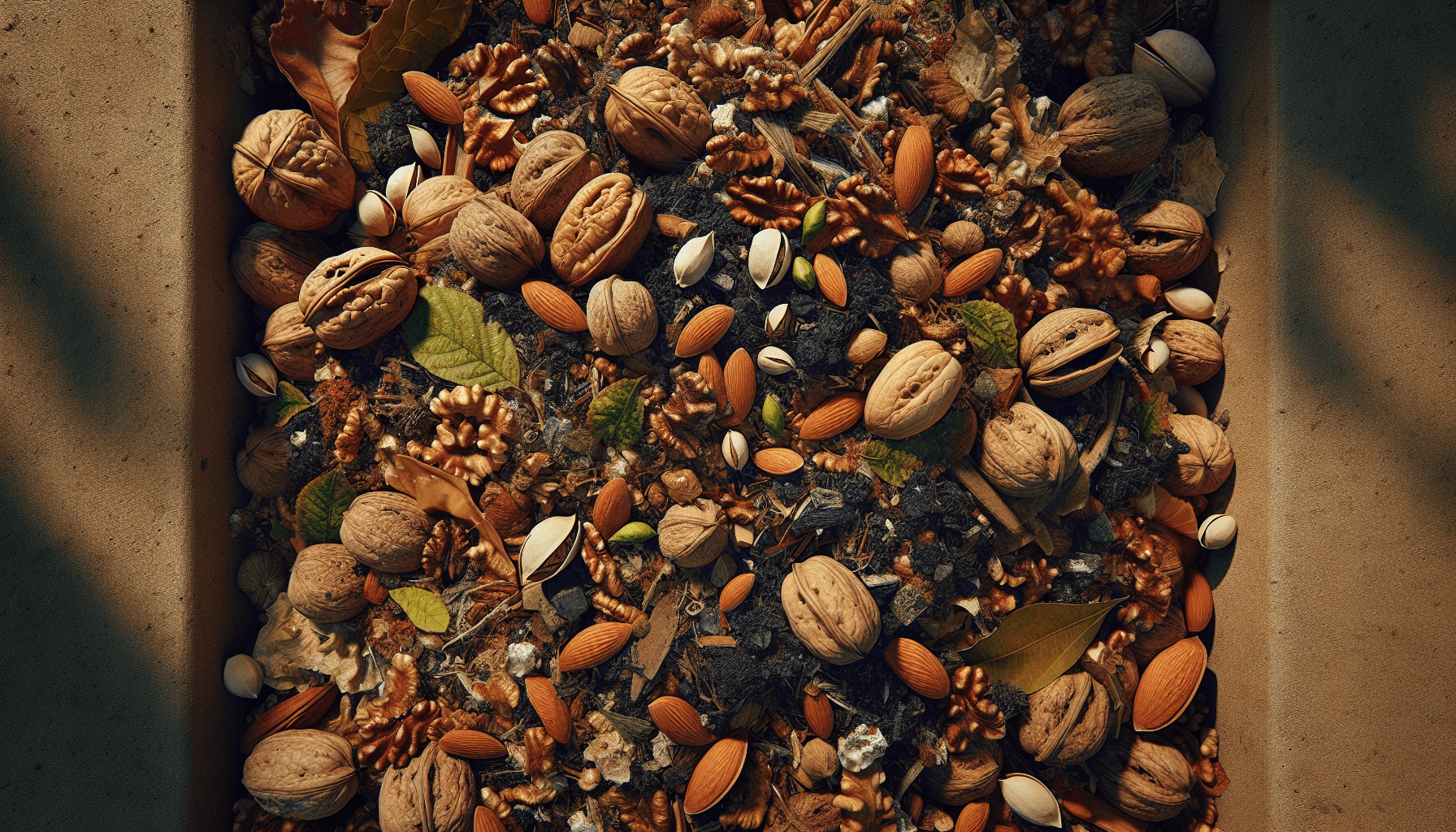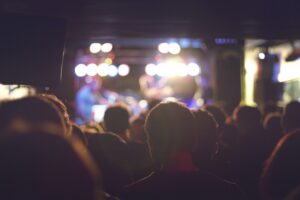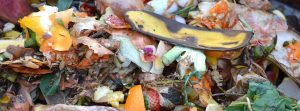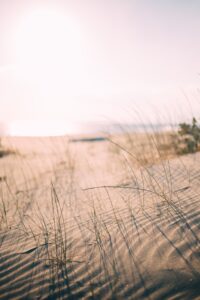Welcome to our friendly guide on composting nut shells! In this concise article, we’ll explore the ins and outs of whether we can toss those leftover nut shells into our compost bins. Our focus will be on the common types of nut shells, their decomposition rates, and the best practices to ensure they break down efficiently. By the end, we’ll be ready to confidently enrich our compost with these natural, nutrient-packed materials, contributing to a more sustainable and eco-friendly gardening routine. Let’s dig in and discover how we can make the most out of our nut shells! Have you ever wondered what to do with those stubborn nut shells once you’ve enjoyed your snack? We often find ourselves torn between throwing them in the trash or finding a more environmentally friendly solution. One question that pops up frequently is: Can I compost nut shells?
Let’s dive into this topic and explore whether or not nut shells can make a valuable contribution to our compost piles. With a friendly tone, we’ll break down everything you need to know, from the benefits of composting nut shells to practical tips on how to do it right.
What Are Nut Shells?
Definition and Common Types
Nut shells are the hard, protective outer layers that encase the edible kernels of nuts. You’ll encounter a variety of nut shells, including:
| Type of Nut | Shell Characteristics |
|---|---|
| Almonds | Hard and thick |
| Walnuts | Hard and wrinkled |
| Pistachios | Hard but thinner |
| Pecans | Wood-like texture |
| Hazelnuts | Hard and smooth |
| Cashews | Often removed before sale, toxic if consumed directly |
Each type of nut shell has its own composition and texture, which can influence its suitability for composting.
Nutrient Composition of Nut Shells
Nut shells, although seemingly insignificant, contain valuable nutrients. They are primarily composed of carbon, making them a great addition to balance the nitrogen-rich green materials in our compost pile. Here’s a simple breakdown of their composition:
| Component | Percentage (%) |
|---|---|
| Carbon | 50-60 |
| Lignin | 10-15 |
| Trace Elements | Varies depending on the type of nut |
What does lignin mean for composting? Lignin is a complex organic polymer that provides rigidity to the plant cell walls. It decomposes slower than other materials, which means nut shells break down at a slower rate compared to softer organic matter.
Are Nut Shells Suitable for Composting?
Pros of Composting Nut Shells
Nut shells offer several advantages when added to a compost bin. Firstly, they help aerate the compost due to their rigid structure, preventing it from becoming too compacted. This promotes better decomposition and reduces odors.
Secondly, nut shells contribute to the carbon content necessary for creating balanced compost. By adding carbon-rich materials like nut shells, we can achieve the desired carbon-to-nitrogen ratio (browns to greens), which is essential for the composting process.
Nut shells also improve the texture of compost. When they eventually break down, they add bulk and structure, which enhances drainage and soil aeration in our gardens.
Cons of Composting Nut Shells
Despite their benefits, there are challenges associated with composting nut shells. Due to their tough, durable nature, nut shells take a long time to break down. They can persist in the compost pile for several years if not properly managed.
Another concern is that some nut shells, like walnut shells, contain natural compounds that can act as herbicides. These compounds are known as juglones, and they can inhibit plant growth if not adequately decomposed. It’s crucial to ensure these shells are fully broken down before using the compost in our gardens.
Lastly, certain nut shells may harbor unwanted pests if not managed correctly. They can attract rodents or insects if left on the compost surface or not sufficiently covered.

Practical Tips for Composting Nut Shells
Preparing Nut Shells for Composting
To make sure our nut shells break down efficiently, we need to prepare them properly before adding them to the compost bin. Here are a few steps we can follow:
- Crush or Shred: Breaking nut shells into smaller pieces increases the surface area for microorganisms to work on, speeding up decomposition.
- Mix with Greens: Combine nut shells with nitrogen-rich materials like fruit scraps, vegetable peels, or grass clippings to maintain a balanced compost pile.
- Moisture and Aeration: Keep the compost pile moist but not soggy. Regularly turn the pile to ensure good aeration, which aids in the breakdown of tougher materials like nut shells.
Balancing Your Compost Pile
As we’ve mentioned, achieving the right carbon-to-nitrogen ratio is critical for successful composting. Nut shells are carbon-rich (browns), so it’s important to balance them with adequate green materials (nitrogen-rich). Here’s a simplified guide:
| Browns (Carbon) | Greens (Nitrogen) |
|---|---|
| Nut Shells | Fruit Scraps |
| Dry Leaves | Vegetable Peels |
| Straw or Hay | Grass Clippings |
| Sawdust | Coffee Grounds |
Aim for a ratio of about 30 parts carbon to 1 part nitrogen. This ensures the composting process runs smoothly and efficiently.
Dealing with Juglone in Walnut Shells
If we plan to compost walnut shells, we’ll need to take extra caution due to their juglone content. It’s a good idea to:
- Compost Separately: Create a separate compost pile for walnut shells and allow them to break down completely over a longer period — usually one to two years.
- Test Decomposition: Before using compost that contains walnut shells, test a small amount on sensitive plants like tomatoes to ensure the juglone has fully decomposed.
Avoiding Pest Problems
To prevent pests from being attracted to our compost pile, we should:
- Bury Nut Shells: Place nut shells deeper within the compost pile rather than on the surface.
- Cover with Greens: Ensure nut shells are mixed well with other compost materials and covered with green waste.
- Secure the Compost Bin: Use a rodent-proof compost bin to keep unwanted critters at bay.
Alternative Uses for Nut Shells
Mulch and Soil Amendment
Nut shells can be used as mulch to suppress weeds, retain soil moisture, and regulate soil temperature. Simply spread crushed or shredded nut shells around the base of plants. Over time, they will break down and add organic matter to the soil.
Nut shells also work as a soil amendment. They can be mixed directly into garden soil to improve aeration and drainage. This is particularly beneficial for heavy clay soils.
Crafting and Home Decor
Nut shells are perfect for various DIY projects. Their sturdy texture makes them ideal for crafting. They can be used to create ornaments, jewelry, and even home decor items like coasters or picture frames.

Environmental Impact of Composting Nut Shells
Reducing Waste
By composting nut shells, we divert them from landfills, reducing our overall waste. Since nut shells are biodegradable, they contribute to a more sustainable waste management system compared to disposing of them in the trash.
Enriching Soil Health
Composting nut shells enriches our soil by adding organic matter, which improves its structure, water retention, and nutrient content. Healthy soil leads to healthier plants and more productive gardens.
Lowering Carbon Footprint
Composting, in general, helps lower our carbon footprint by reducing methane emissions produced by organic waste in landfills. Additionally, using homemade compost reduces the need for chemical fertilizers, which have their own environmental impact.
Frequently Asked Questions
How Long Do Nut Shells Take to Decompose?
Nut shells decompose slowly, taking anywhere from six months to several years depending on the type and preparation. Crushing them and maintaining an optimal compost pile significantly speeds up the process.
Can All Nut Shells Be Composted?
Most nut shells can be composted, but it’s essential to manage them properly. Be cautious with walnut shells due to juglone. Cashew shells are usually not available for composting as they are typically removed before sale, but if they are, they should not be composted due to their toxic nature.
Can Nut Shells Attract Pests?
Nut shells can attract pests if not managed correctly. Burying them within the compost pile and using a rodent-proof compost bin can help mitigate this issue.
Is It Necessary to Grind Nut Shells Before Composting?
While not absolutely necessary, grinding or crushing nut shells accelerates decomposition. Smaller pieces have more surface area for microorganisms to work on, speeding up the composting process.
Are Nut Shells Good for All Types of Plants?
Generally, yes. Once fully composted, nut shells become a valuable soil amendment suitable for most plants. However, ensure walnut shells are completely decomposed to avoid the toxic effects of juglone.

DIY Nut Shell Compost Bin
Building a Simple Compost Bin
Creating a dedicated compost bin for nut shells ensures we manage them effectively. Here’s a quick guide to building one:
Materials Needed
| Item | Quantity |
|---|---|
| Wooden Pallets | 4 |
| Screws or Nails | Enough to secure pallets together |
| Hinges | 2 (for the lid) |
| Latch | 1 (to secure the lid) |
| Drill/ Hammer | 1 each |
Steps
- Assemble the Frame: Stand the pallets upright to form a square and secure each corner with screws or nails. This will form the sides of the compost bin.
- Install the Lid: Attach hinges to one side of a pallet to create a hinged lid. Secure a latch on the opposite side to keep the lid closed.
- Position the Bin: Place the bin in a well-ventilated area with good drainage. Ensure it’s easily accessible for adding and turning compost materials.
- Add Nut Shells and Other Compostables: Begin adding nut shells, ensuring they are crushed or shredded. Layer them with greens and other compost materials following the correct carbon-to-nitrogen ratio.
Maintaining Your Nut Shell Compost Bin
Regularly manage the compost by turning it to add oxygen and checking moisture levels. Ensure the pile remains damp but not waterlogged. With consistent care, we can efficiently transform nut shells and other organic waste into rich compost.
Final Thoughts
We’ve explored the ins and outs of composting nut shells and discovered their potential benefits for both our gardens and the environment. Nut shells, although challenging to break down, can be a valuable addition to our compost piles when managed correctly. By preparing them properly, balancing our compost materials, and avoiding common pitfalls, we can turn these otherwise discarded shells into nutrient-rich compost.
So, next time we snack on nuts, let’s reconsider throwing the shells away. With a bit of effort, they can be transformed into a resource that boosts our gardens and helps reduce our environmental footprint. Happy composting!




